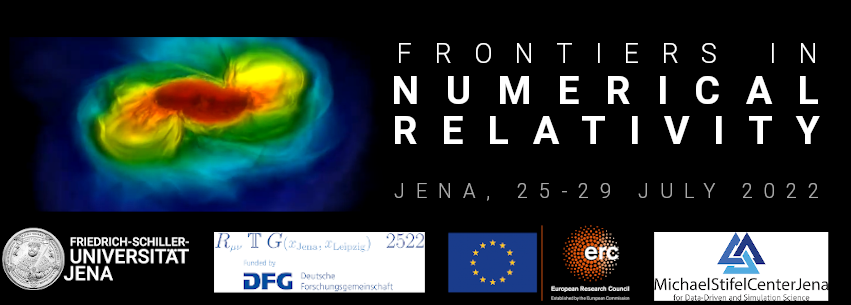Speaker
Description
The multi-messenger detection of GW170817, GRB170817A, and AT2017gfo originating from the merger of two neutron stars have been a scientific breakthrough. Under the assumption that dark matter accumulates in and around neutron stars, multi-messenger observations of compact binary mergers will provide a new way to search for and constrain the nature of dark matter. In this context, we extended the numerical-relativity code BAM to enable the simulation of neutron stars that contain ordinary baryonic matter, but also a mirror dark matter component. We performed single star tests to verify our code changes and perform the binary neutron star simulations using a two-fluid approach. Despite the drawback that our simulations are based on superimposed initial configurations, we find that the presence of dark matter reduces noticeably the lifetime of the remnant and changes the amount of ejected material. Consequently, electromagnetic signals that arise due to the merger of binary neutron star mergers admixed with dark matter will be different than those from `pure' neutron stars. Given the increasing sensitivity of gravitational-wave interferometers and other observational facilities, our analysis gives a new perspective on how to probe the presence of dark matter.

